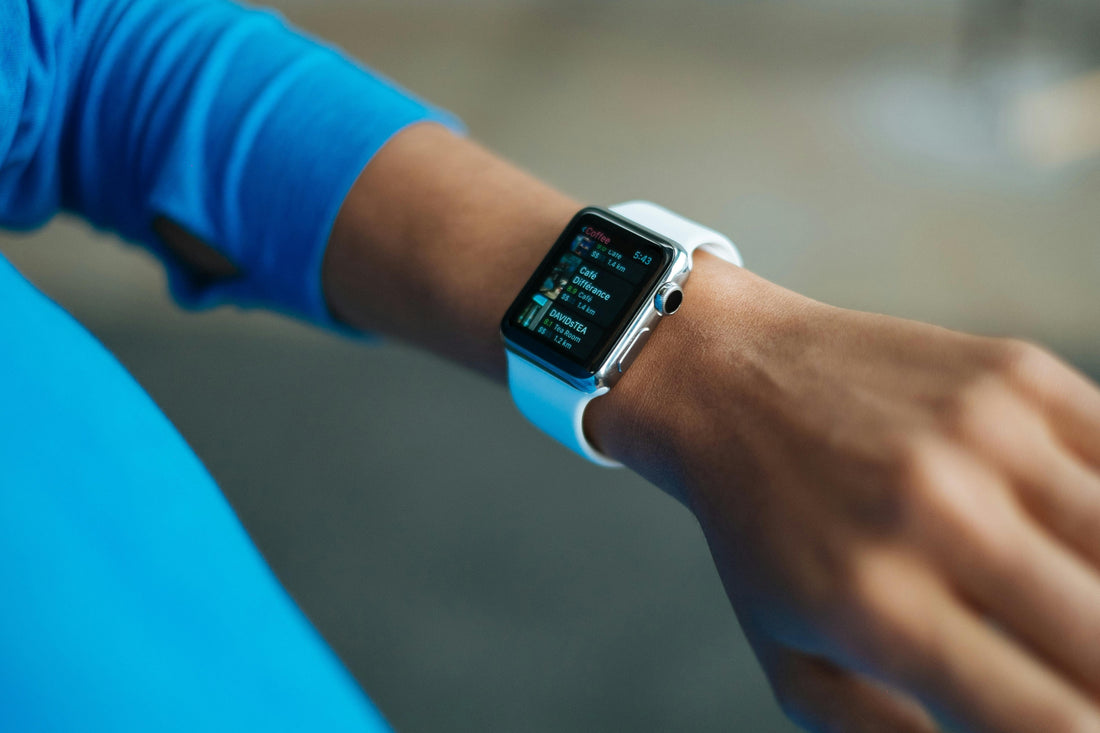
The Ever-Evolving Partnership: How Wearable Tech and Mobile Apps are Revolutionizing Fitness
Share
In an era defined by data and connectivity, it's no surprise that our approach to fitness has undergone a significant transformation. The dynamic duo of wearable technology and mobile exercise apps has moved from being a niche interest for tech enthusiasts to a mainstream phenomenon, empowering individuals to take a more informed and proactive role in their health and well-being. This powerful partnership is reshaping how we track our progress, personalize our workouts, and ultimately achieve our fitness goals.
Gone are the days of relying solely on subjective feelings or sporadic manual tracking. Today, a sophisticated ecosystem of devices and applications provides a constant stream of data, offering unprecedented insights into our bodies and our activities. From sleek smartwatches and discreet fitness bands to a plethora of specialized sensors, wearable technology acts as our ever-present digital companion, diligently monitoring a vast array of metrics.
The Power of Data at Your Wrist (and Beyond):
Modern wearables are far more than just glorified pedometers. They now boast an impressive array of sensors capable of tracking:
- Heart Rate and Heart Rate Variability (HRV): Providing real-time feedback on exertion levels during workouts and offering insights into recovery and stress levels. HRV, in particular, is becoming increasingly recognized as a valuable indicator of overall well-being and the body's readiness to train.
- Activity Levels: Accurately measuring steps taken, distance covered, calories burned, and active minutes, encouraging movement throughout the day.
- Sleep Patterns: Analyzing sleep duration, sleep stages (light, deep, REM), and sleep quality, helping users understand and improve their rest.
- Blood Oxygen Saturation (SpO2): Some advanced wearables now offer on-demand or continuous monitoring of blood oxygen levels, providing valuable information about respiratory health.
- Body Temperature: Certain devices can track baseline body temperature and detect deviations, potentially indicating illness.
- GPS Tracking: Mapping outdoor workouts like running, cycling, and hiking, providing detailed data on pace, distance, and elevation.
- Even more advanced metrics: Newer devices are incorporating features like ECG (electrocardiogram) to monitor heart rhythm and fall detection for enhanced safety.
Mobile Exercise Apps: The Intelligent Hub:
While wearables excel at data collection, mobile exercise apps serve as the intelligent hub that synthesizes, analyzes, and presents this information in a user-friendly and actionable way. These apps offer a diverse range of functionalities, including:
- Workout Tracking and Logging: Seamlessly recording workouts, whether automatically detected by the wearable or manually entered, allowing users to monitor their progress over time.
- Personalized Workout Plans: Many apps offer tailored training programs based on individual fitness levels, goals, and available equipment. Some even adapt dynamically based on performance data from the wearable.
- Guided Workouts: Providing step-by-step instructions, often with video demonstrations, for a wide variety of exercises and workout routines.
- Progress Visualization: Presenting data in clear and engaging charts and graphs, making it easy to track improvements and identify trends.
- Goal Setting and Achievement Tracking: Allowing users to set specific fitness goals and providing motivation through progress updates and virtual rewards.
- Nutritional Tracking and Integration: Some apps allow users to log their food intake, providing a holistic view of their calorie balance and macronutrient intake, often integrating with other health and nutrition apps.
- Social Connectivity and Challenges: Connecting users with friends or fitness communities, fostering motivation through shared goals and friendly competition.
- Integration with Other Health Platforms: Often syncing data with broader health ecosystems, providing a comprehensive overview of overall well-being for both the user and potentially their healthcare providers.
- AI-Powered Coaching: Increasingly, artificial intelligence is being integrated to provide more personalized feedback on form, suggest adjustments to training plans, and offer motivational support.
The Synergistic Benefits:
The true power lies in the synergy between wearables and mobile apps. The continuous data stream from the wearable fuels the intelligence of the app, leading to a more personalized and effective fitness experience. For example:
- A wearable can track your heart rate during a run, and the connected app can analyze this data to provide insights into your training zones and suggest adjustments to your pace for optimal results.
- Your sleep data from a wearable can inform the app about your recovery levels, influencing the intensity of your recommended workout for the day.
- Activity tracking throughout the day can contribute to your overall calorie expenditure goals set within the app.
Looking Ahead: The Future of the Fitness Duo:
The evolution of wearable technology and mobile exercise apps shows no signs of slowing down. We can expect even more sophisticated sensors, more accurate data, and more intelligent algorithms in the future. Trends to watch include:
- More advanced health monitoring: Expect wearables to incorporate non-invasive methods for tracking blood glucose levels, blood pressure, and other vital signs.
- Enhanced AI coaching: AI will likely become even more integrated, providing real-time feedback on exercise form through motion sensors and offering highly personalized training plans that adapt in real-time.
- Seamless integration with virtual and augmented reality: Imagine immersive workout experiences guided by virtual coaches or overlaying real-time performance data onto your vision during outdoor activities.
- Greater focus on mental well-being: Wearables and apps will likely incorporate more features to track and support mental health, such as stress management tools and mindfulness exercises.
- Increased personalization: The data collected will be used to create even more tailored recommendations for workouts, nutrition, and recovery, catering to individual needs and preferences.
In Conclusion:
Wearable technology and mobile exercise apps have democratized access to fitness data and personalized guidance. By providing us with a deeper understanding of our bodies and our activities, they empower us to make more informed choices, stay motivated, and ultimately achieve our health and fitness aspirations. As technology continues to advance, this powerful partnership will undoubtedly play an even more integral role in shaping the future of how we approach our well-being, making healthier and more active lives more attainable for everyone.


